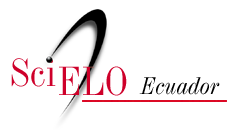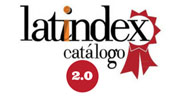Comparación de algoritmos de máquinas de aprendizaje para la detección de arrecife de coral
DOI:
https://doi.org/10.29019/enfoqueute.v5n3.43Palabras clave:
Coralbot, arrecife de coral, máquinas de aprendizaje, filtros Gabor WaveletsResumen
(Recibido: 2014/07/31 - Aceptado: 2014/09/23)
El presente trabajo se enfoca en el desarrollo de un detector de coral de desempeño rápido que se utiliza para un vehículo autónomo submarino (AUV, por sus siglas en inglés). Una detección rápida de coral garantiza la estabilización del AUV en las cercanías del arrecife de coral en el menor tiempo posible, evitando que la desorientación del AUV destruya al arrecife. En este trabajo se usó la investigación de Purser, Bergmann, Lundälv, Ontrup, & Nattkemper (2009), por su precisión. Este detector consta de una parte de extracción de vectores característicos, la cual se realiza con filtros Gabor Wavelets; y una parte de clasificación de vectores que usa máquinas de aprendizaje, basado en Redes Neuronales. Debido al extenso tiempo de ejecución de las Redes Neuronales, se reemplazaron por un algoritmo de clasificación basado en Árboles de Decisión. Se utilizó una base de datos de 621 imágenes de corales de Belice (110 imágenes de entrenamiento y 511 imágenes de prueba). Se implementó un banco de filtros Gabor Wavelets utilizando C++ y la librería OpenCV. Se realizó la comparación de la precisión y el tiempo de ejecución de 9 algoritmos de máquinas de aprendizaje, cuyo resultado fue la selección del algoritmo de Árboles de Decisión. Nuestro detector de coral posee un tiempo de ejecución de 70ms en comparación con 22s desarrollados por el algoritmo de Purser et al. (2009).
Descargas
Publicado
Número
Sección
Licencia
Los autores retienen todos sus derechos (© copyright).
- Los autores retienen sus derechos de marca y patente, y también sobre cualquier proceso o procedimiento descrito en el artículo.
- Los autores retienen el derecho de compartir, copiar, distribuir, ejecutar y comunicar públicamente el artículo publicado en Enfoque UTE (por ejemplo, colocarlo en un repositorio institucional o publicarlo en un libro), siempre que se dé el reconocimiento de su publicación inicial en la revista Enfoque UTE.
- Los autores retienen el derecho a hacer una posterior publicación de su trabajo, de utilizar el artículo o cualquier parte de aquel (por ejemplo: una compilación de sus trabajos, notas para conferencias, tesis, o para un libro), siempre que indiquen la fuente de publicación (autores del trabajo, revista, volumen, número y fecha).
























